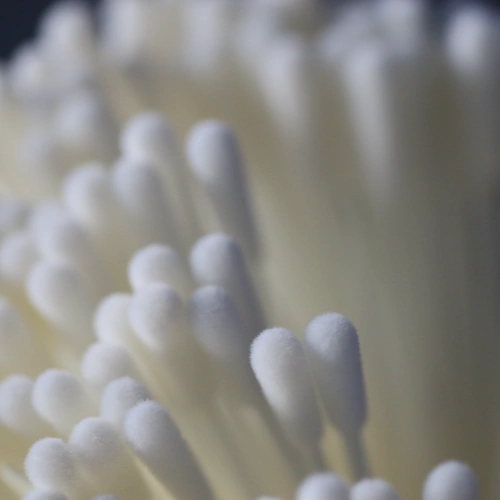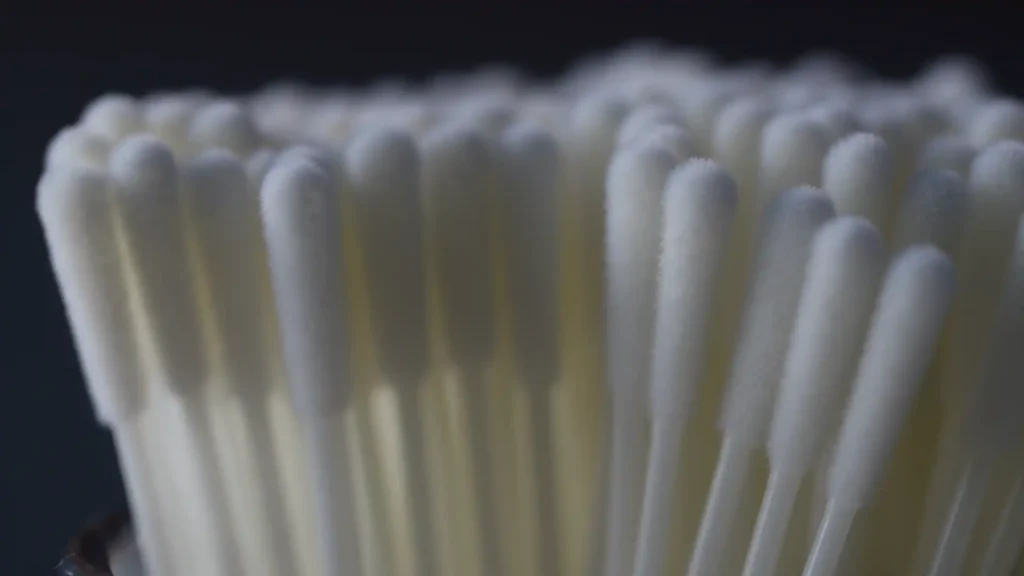Sterile Mini-tip Nasopharyngeal (NP)Flock Swab
1645Sterile Mini-tip Nasopharyngeal (NP)Flock Swab For the collection of Nasopharyngeal (NP) specimens. Flexible Mini-tip size flocked swab 80mm breakpoint on the shaft Peel pouch - i...
View detailsSearch the whole station Pandemic Supply

A flocked swab is a high-tech medical sampling device designed for superior collection and release of biological samples. It represents a significant advancement over traditional fiber-wrapped swabs (like cotton swabs) due to its unique structure and performance.
The key difference lies in the brush head:
The Core Principle: Capillary Action
Instead of absorbing the sample like a sponge, the vertical fibers on a flocked swab create a dense network of tiny capillaries. This allows the swab to:
| Feature | Flocked Swab | Traditional Cotton Swab |
|---|---|---|
| Sample Release | >90% released into the liquid. | ~20-40% released; sample remains trapped inside. |
| Collection Efficiency | Excellent for collecting cells from mucosal surfaces. | Less efficient at exfoliating and holding cells. |
| Speed of Release | Very fast (seconds). | Slow and often incomplete. |
| PCR Compatibility | Lint-free and made of synthetic materials that do not contain natural PCR inhibitors (like fatty acids in cotton). | Cotton fibers can contain inhibitors that cause false-negative results in sensitive molecular tests. |
| Patient Comfort | The soft, brush-like tip is more flexible and comfortable, especially for nasopharyngeal sampling. | Stiffer and can be more uncomfortable. |
Flocked swabs are the gold standard in many fields where maximizing sample yield is critical:
Many flocked swabs designed for diagnostic testing feature a breakpoint (a pre-scored notch) on the plastic shaft. This allows the tip to be easily snapped off into a collection tube filled with transport media, ensuring the sample is preserved and minimizing the risk of contamination. This also makes the tube easier to seal and transport.
In essence, a flocked swab is a purpose-engineered tool that collects more sample and releases nearly all of it into the testing liquid. This dramatically increases the sensitivity and accuracy of diagnostic tests, making it a critical component in modern medicine, particularly in molecular biology and infectious disease testing.

Nylon Flocked swabs
Flocked swabs were propelled into the global spotlight by the COVID-19 pandemic.
Flocked swabs are specialized medical devices designed for optimal sample collection and release. Their unique nylon fiber structure enables superior hydraulic absorption and elution efficiency (>90%), making them indispensable in modern diagnostics, forensics, and environmental monitoring.
Nasopharyngeal Flocked Swab
Oropharyngeal Flocked Swab
Cervical Flocked Swab
Universal/Surface Sampling Flocked Swab
Plastic Shaft
Aluminum Shaft
Steel Shaft
Shaft-Free (Integrated Design)
Sterile Mini-tip Nasopharyngeal (NP)Flock Swab For the collection of Nasopharyngeal (NP) specimens. Flexible Mini-tip size flocked swab 80mm breakpoint on the shaft Peel pouch - i...
View detailsFirst of all, we would like to thank new and old customers for their support of our company. We are now launching various preferential plans for new and old customers on velvet swabs. For specific...
View detailsnylon flocked swab is a specialized type of swab designed for high-performance sample collection, cleaning validation, and precision applications i...
View detailsThe vertical nylon fibers of the flocked nasopharyngeal swabs can improve sample collection rates and aid in the elution of the specimen into the t...
View detailsWe value your privacy We use cookies to enhance your browsing experience, serve personalized ads or content, and analyze our traffic. By clicking "Accept All", you consent to our use of cookies.
Our Privacy Policy